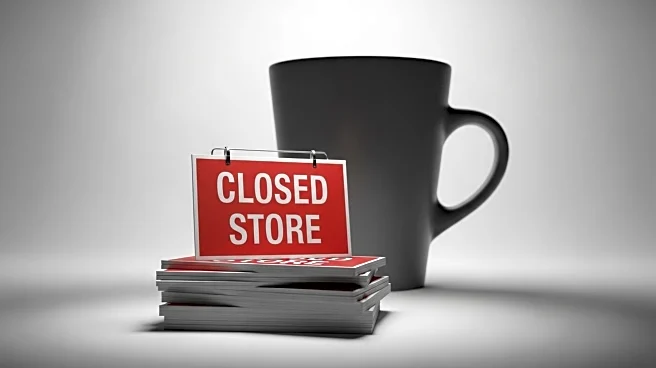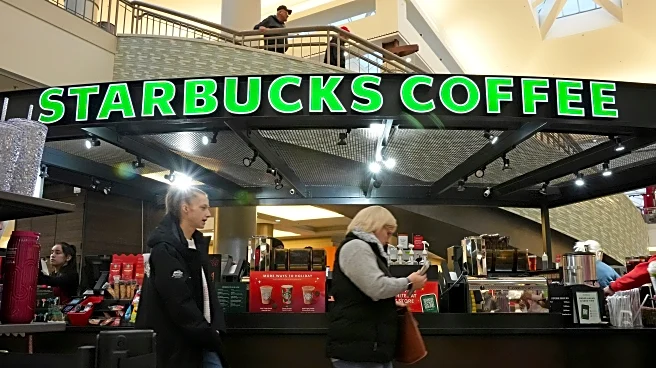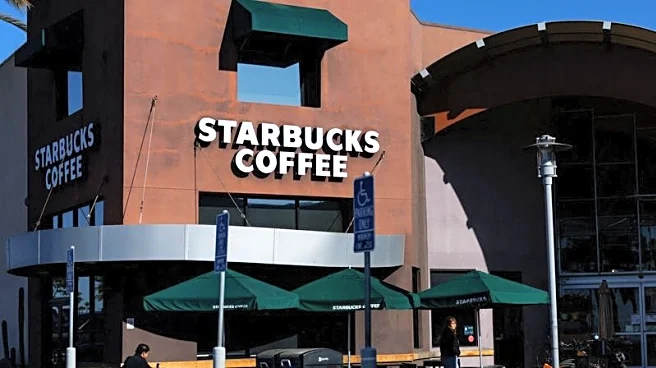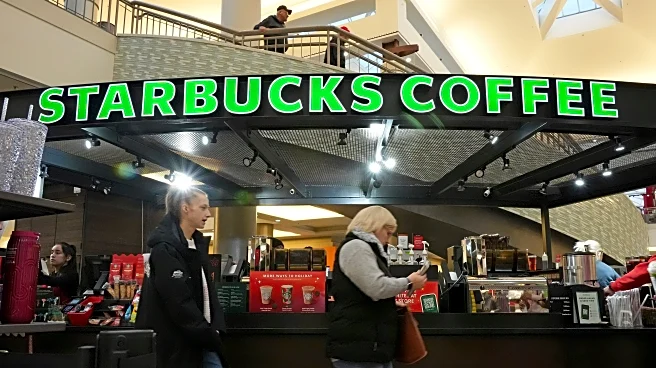What's Happening?
Starbucks has announced plans to lay off 900 non-retail employees and close stores across North America as part of a $1 billion restructuring effort. CEO Brian Niccol stated that the store closures will result in a 1% decline in the total number of Starbucks locations in North America for the fiscal year. The company has faced sluggish sales due to prolonged inflation, leading to six consecutive quarters of declining same-store sales. Starbucks aims to improve store interiors to attract customers, identifying locations where such improvements are not feasible for closure.
Why It's Important?
The restructuring plan is significant as it addresses the financial challenges Starbucks has faced, including declining sales and inflationary pressures. By closing underperforming stores and focusing on enhancing customer experience, Starbucks seeks to strengthen its market position and improve profitability. The layoffs and store closures could impact employee morale and community dynamics, as Starbucks stores often serve as local gathering spots. The company's stock saw a slight increase following the announcement, indicating investor interest in the restructuring strategy.
What's Next?
Starbucks plans to inform employees at the affected stores this week, offering transfers to other locations where possible. The company will continue to assess its store portfolio and make strategic decisions to align with its turnaround goals. As Starbucks implements these changes, it will face scrutiny from stakeholders, including employees, customers, and investors, who will be monitoring the company's progress and its ability to achieve financial stability.
Beyond the Headlines
The restructuring comes amid unionization efforts at Starbucks stores, with workers seeking better working conditions and pay. The company's approach to store closures and layoffs could influence its relationship with unionized employees and impact ongoing negotiations. Additionally, the focus on creating a welcoming store environment underscores the importance of customer experience in retail strategy, which could set a precedent for other companies facing similar challenges.












